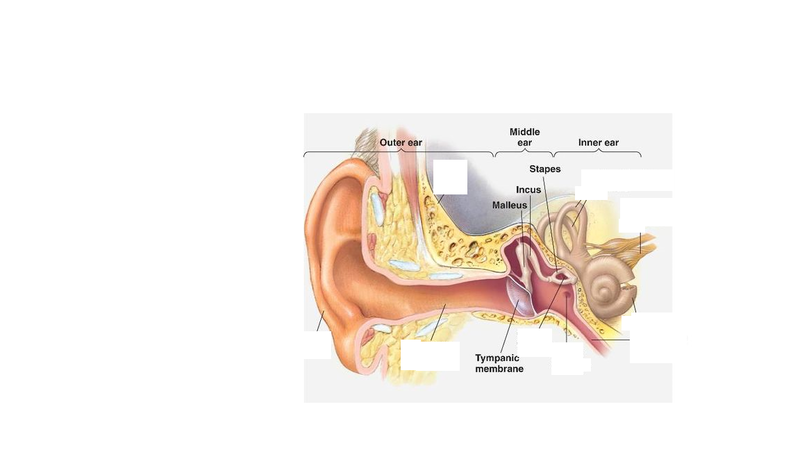12th Grade > Biology
LOCOMOTION AND MOVEMENT MCQs
Total Questions : 68
| Page 7 of 7 pages
Answer: Option D. -> Titin
:
D
Titinis a large abundantproteinof striated muscle.Titin'sprimaryfunctionsare to stabilize the thick filament, center it between the thin filaments, prevent overstretching of thesarcomere, and to recoil thesarcomerelike a spring after it is stretched.
Muscles contract through theactionof two proteins calledactinandmyosin along with regulatory proteins tropomyosin and troponin, control your voluntary movements.
:
D
Titinis a large abundantproteinof striated muscle.Titin'sprimaryfunctionsare to stabilize the thick filament, center it between the thin filaments, prevent overstretching of thesarcomere, and to recoil thesarcomerelike a spring after it is stretched.
Muscles contract through theactionof two proteins calledactinandmyosin along with regulatory proteins tropomyosin and troponin, control your voluntary movements.
Answer: Option A. -> Centrally located single nucleus
:
A
Skeletal~ MusclesCardiac ~MusclesVoluntaryInvoluntaryNerve supply from central nervous systemNerve supply from brain and autonomic nerve supplyAttached to bone via tendon or each other via aponeurosisWalls of the heartBody movementPumping of blood away from the heartRapid contraction but tire quicklyRapid contraction and tirelessNon-branchingBranchingMultinucleated cellsUninucleated cells
:
A
Skeletal~ MusclesCardiac ~MusclesVoluntaryInvoluntaryNerve supply from central nervous systemNerve supply from brain and autonomic nerve supplyAttached to bone via tendon or each other via aponeurosisWalls of the heartBody movementPumping of blood away from the heartRapid contraction but tire quicklyRapid contraction and tirelessNon-branchingBranchingMultinucleated cellsUninucleated cells
Answer: Option A. -> First seven pairs
:
A
First 7 pairs of ribs are attached anteriorly to the sternum, next 3 attached to a cartilage called costochondral cartilage and the last 2 pairs do not have any anterior attachment and hence called floating ribs.
:
A
First 7 pairs of ribs are attached anteriorly to the sternum, next 3 attached to a cartilage called costochondral cartilage and the last 2 pairs do not have any anterior attachment and hence called floating ribs.
Answer: Option D. -> Rhythmicity
:
D
Rhythmicity is a property of cardiac musclesin cardiology, the ability to beat, or the state of beating, rhythmically without external stimuli.
Excitability: this refers to muscle tissue being able to react to nervous stimulation.
Extensibility: this refers to the ability of muscle tissue to lengthen when contracting and provide the effort required to move the lever system (the bones and joints), producing coordinated movement.
Contractility -: this refers to the capacity of a muscle to contract or shorten forcibly when stimulated by nerves and hormones (excitability).
:
D
Rhythmicity is a property of cardiac musclesin cardiology, the ability to beat, or the state of beating, rhythmically without external stimuli.
Excitability: this refers to muscle tissue being able to react to nervous stimulation.
Extensibility: this refers to the ability of muscle tissue to lengthen when contracting and provide the effort required to move the lever system (the bones and joints), producing coordinated movement.
Contractility -: this refers to the capacity of a muscle to contract or shorten forcibly when stimulated by nerves and hormones (excitability).
Answer: Option A. -> Pectoral girdle - Acetabulum
:
A
The shoulder girdle or pectoral girdle is the set of bones which connects the upper limb to the axial skeleton on each side. In humans, it consists of the clavicle and scapula.The acetabulumis a concave surface of the pelvis. The head of thefemurmeets with the pelvis at the acetabulum, forming the hip joint.
The pelvic girdle is formed by the fusion of ilium, ischium, and pubis.
:
A
The shoulder girdle or pectoral girdle is the set of bones which connects the upper limb to the axial skeleton on each side. In humans, it consists of the clavicle and scapula.The acetabulumis a concave surface of the pelvis. The head of thefemurmeets with the pelvis at the acetabulum, forming the hip joint.
The pelvic girdle is formed by the fusion of ilium, ischium, and pubis.
Answer: Option C. -> Conducts impulses forward
:
C
T –tubules are a part of sarcoplasmic reticulum of muscle cells. Calcium is stored in the sarcoplasmic reticulum.Thefunction of T-TUBULESis to conduct impulses from the surface of the cell (sarcolemma) down into the cell. Acetylcholoine is present in the axon terminals of tne neurons.
:
C
T –tubules are a part of sarcoplasmic reticulum of muscle cells. Calcium is stored in the sarcoplasmic reticulum.Thefunction of T-TUBULESis to conduct impulses from the surface of the cell (sarcolemma) down into the cell. Acetylcholoine is present in the axon terminals of tne neurons.
Answer: Option A. -> Malleus, incus, stapes
:
A
The three tiniest bones in the body form the coupling between the vibration of the eardrum and the forces exerted on the oval window of the inner ear. Formally named the malleus, incus, and stapes, they are commonly referred to in English as the hammer, anvil, and stirrup.
:
A
The three tiniest bones in the body form the coupling between the vibration of the eardrum and the forces exerted on the oval window of the inner ear. Formally named the malleus, incus, and stapes, they are commonly referred to in English as the hammer, anvil, and stirrup.

Answer: Option D. -> Arthritis is an old person's disease.
:
D
The most common misconception about arthritis is that it's a disease only of old people. In actuality, arthritis can affect anyone at any age, not just the elderly including children, Young adults and middle aged.
:
D
The most common misconception about arthritis is that it's a disease only of old people. In actuality, arthritis can affect anyone at any age, not just the elderly including children, Young adults and middle aged.
















